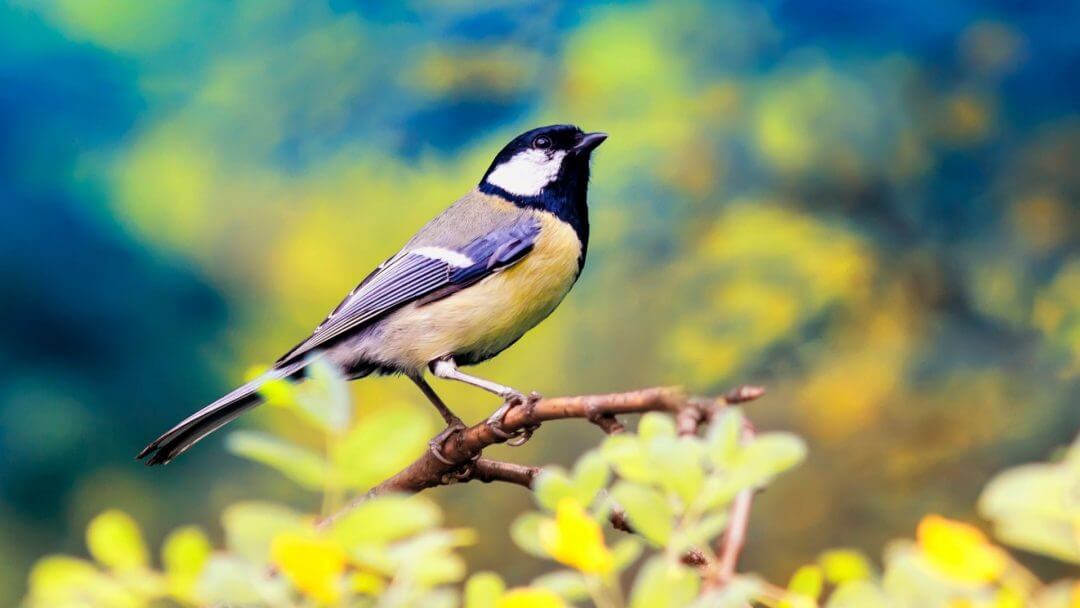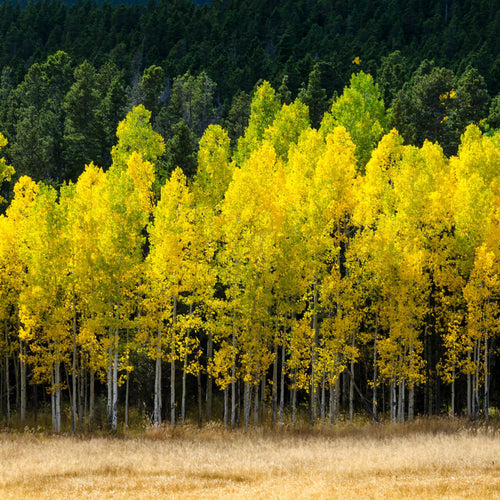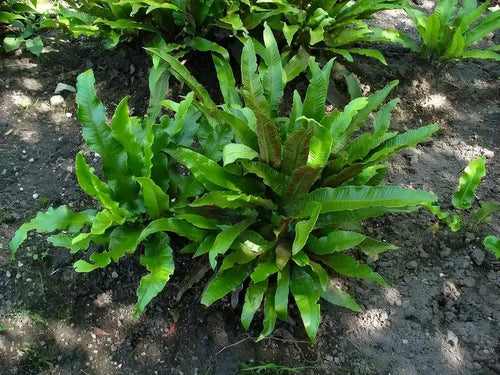Maximilian Sunflower
Maximilian Sunflower is a tall, native perennial with bright yellow, daisy-like flowers and narrow leaves. It often forms impressive colonies and attracts pollinators in late summer and fall. Sunflowers are remarkable and versatile plants that offer a range of benefits when used in landscaping. Their vibrant color and adaptability can add aesthetic value and functional advantages to various outdoor spaces.
The Maximilian Sunflower is a radiant North American perennial known for its impressive stature and vibrant yellow hue. With a propensity to form dense colonies, these stunningly dynamic plants provide rich visual appeal to any landscape or garden. Their sublime and livening presence innately offers rich enchantment for the gaze of onlookers.
Maximilian Sunflower perennial grows to a height of 3-10 feet with slender stalks and narrow leaves with bright yellow flowers that are excellent for attracting pollinators. These perennials bloom after most other perennials stop blooming later in summer into early fall. The Latin name for this vibrant plant is helianthus maximiliani.
Maximillian Sunflower Has Vibrant Yellow Blooms
The blooms are brilliant yellow and have many petals alongside a disk-shaped cone. These plants are native to the United States in many regions, and they are so hardy that they can grow even near roadways, prairies, and open fields.
Maximilian Sunflowers are sustainability-friendly and promote birds, bees, and monarchs as open pollinators. They are also super low maintenance and seldom need fertilizers or water in areas with adequate rainfall. It's a super hardy wildflower perennial with rough edges, displaying its durability and simplicity of appearance as well.
It can tolerate drought conditions and open sunlight. Birds and insects feast on the seeds inside the plant's conehead, making it an excellent source of a good supply without messy bird feeders or buying bird seeds.
It is highly sustainable, hardy, and thrives in various soil types, making it one of the best, most vibrant, and hardiest complete sun plants. TN Nursery offers blooming age, bare root perennials at a fraction of the cost of potted plants. Why buy a container and a handful of soil and pay three prices when you can buy the plant bareroot and have the same thing shipped to your door at a fraction of the cost?
Maximilian Sunflower Gets Very Tall
These gorgeous natural creations intrinsically reach toward the sky. Standing erect, they often get a looming height of around 10 feet. The towering beauties possess uniquely slender stems decorated with long lance-shaped leaves. Underneath the flower head, dark green phyllaries stick straight out before subtly curling at the tips.
The bright golden petals delightfully evoke luminescent rays of sunshine. A jagged alternation pattern creates intricate layers of pleasing asymmetry. Their wispiness embodies an illustrative quality that summons a beatific repose. This flower’s center is packed with circular bronze florets. These discs often showcase a fractalized pattern that is simply mesmerizing. Meanwhile, the circumference is embedded with sleek light-yellow florets that create a glorious juxtaposition.
Their relatively late blooming period is pleasant in summer and early fall. Thus, they can become the cornerstone of any idyllic scenery. Unlike many other growths from the same genus, these sunflower stems can support several clusters. As a result, these durable plants make for a divine ornamental selection with downright transformative effects on the landscape.
Wildlife also likes this flower. Its abundance of nectar is considered irresistible to local pollinators, so it is often associated with a thriving ecosystem of bees and butterflies. Later in their flowering stage, the seeds occasionally attract a diverse ornithological scene, much to the delight of birdwatchers.
Maximilian Sunflower derives its namesake from Prince of Wied-Neuwied. The famed German explorer first came upon these magnificent flowers during his North American expeditions, and they were dubbed Helianthus in his honor. It is a suitable title, especially since any outdoor environment is lucky to be bestowed with these golden gems.
They are a native perennial coveted for their height, versatility, and blazing yellow hues. It's easy to grow even if you have little gardening experience. The following post concerns this gorgeous bloomer and how it can add life to your outdoor spaces.
What Does It Look Like?
People often hear "sunflower" and think of a bloom with a black central disc surrounded by blazing yellow petals. And while they share some characteristics with common sunflowers, there are some distinctions. For instance, their central disc is smaller than a typical sunflower and does not contain blackened florets.
Instead, the hub of the Maximilian Sunflower is populated by clusters of tiny, yellow florets that provide sustenance for pollinators. So, their entire bloom is varying shades of yellow. One thing they share with its more common sunflower relative is height. They can grow to a height of 10 feet!
The flower is supported by a long, narrow stem covered in coarse hairs. Alternate, blade-shaped leaves adorn the towering stem, growing as high as just under the flower bloom. The proximity of the green leaves to the actual flower provides a stunning juxtaposition of natural color evocative of the sun setting over verdant hills. Their conehead is filled with intricate patterns of bronze to bright yellow florets. The mesmerizing structure of these tiny florets belies the mostly uniform layers of petals that envelope them. The florets produce seeds that are a food source for various bird species.
It is also unique among its genus because one stem can support a cluster of flowers instead of just one. Naturally, they grow dense and can colonize very quickly if allowed to. This makes them a good option for filling a large area with golden hues. However, if you have limited space to work with, the multi-flower growths of the slender stems still allow for a radiant burst of color in tight spaces.
Blooms of them are typically 5 inches in diameter, with a central disc spreading out to about one inch in diameter.
What Are the Benefits of Them?
They can add a gilded, regal quality to your outdoor spaces, but that's not all they bring. Take a look at the following reasons why people love to grow these plants:
They Support the Local Nectar Bee Population - Bees flock to them because they produce nectar. Moreover, it produces nectar at a time of year when other perennials become barren. So, they are an excellent choice to keep bees returning to your garden late into the season. As if the inherent chroma of the flower weren't enough, it also attracts colorful, nectar butterflies.
Late Blooming- Many add them to their gardens because they bloom into late fall. This unique blooming span makes this flower ideal for maintaining color throughout the year.
Very Tolerant—While it prefers dry to moist soils, it can tolerate many conditions. It's not uncommon for this plant to thrive in loamy or limestone-rich soil.
Great for Bird Lovers- The fertile florets of the flower produce seeds late into the season, which attract a wide variety of birds. The flower is a no-brainer if you are an avid bird-watcher or enjoy providing a haven for avian wildlife.
If you need to become more familiar with this perennial, you may have questions about how to grow and maintain them. So, let's address some common questions about this rewarding flower.
Do They Come Back Every Year?
Another way it distinguishes itself from other sunflowers is that it's a perennial—many sunflowers are annuals. It is supported by a hardy rhizome that will produce new growth yearly.
How Tall Do Maximilian Sunflowers Get?
They are known for their stature, reaching up to 10 feet. Its blooms stretch more or less upright toward the sky, giving them a stately appeal that contrasts nicely with flowers and plants that grow closer to the ground.
How Do You Plant them?
It needs between 6 and 8 hours of sun per day. Sow the seeds directly into the soil at about half an inch depth. Seeds should be planted in spring. Be sure to leave between 18 and 24 inches between each plant to allow the root system to grow correctly and avoid crowding.
Do You Need to Deadhead Them?
Deadheading will keep blooms coming back and keep the plant looking clean. It would help if you deadheaded dying flowers as they appear. Deadheading will also stymie seed production to avoid spreading to other parts of your garden.
Should You Support the Stem of the Maximilian Sunflower
They can grow to be very tall. Their stems are naturally skinny, so you may need to support them with stakes. If you see the plant start to bend or sag, or if you live in an area that experiences high winds, helping the stems with stakes may be necessary. Overly rich soil may also promote hardy blooms with weak stems. If you notice that yours are arching before they bloom, you may need to amend the soil to make it less fertile.
TN Nursery is your source for many native species, from lush ferns to pollinating perennials. We ship nursery-nourished plants that can go straight into your soil right to your door. There is no hassle, and with our one-year guarantee, there is no risk. Place an order for your favorite plants today!


























